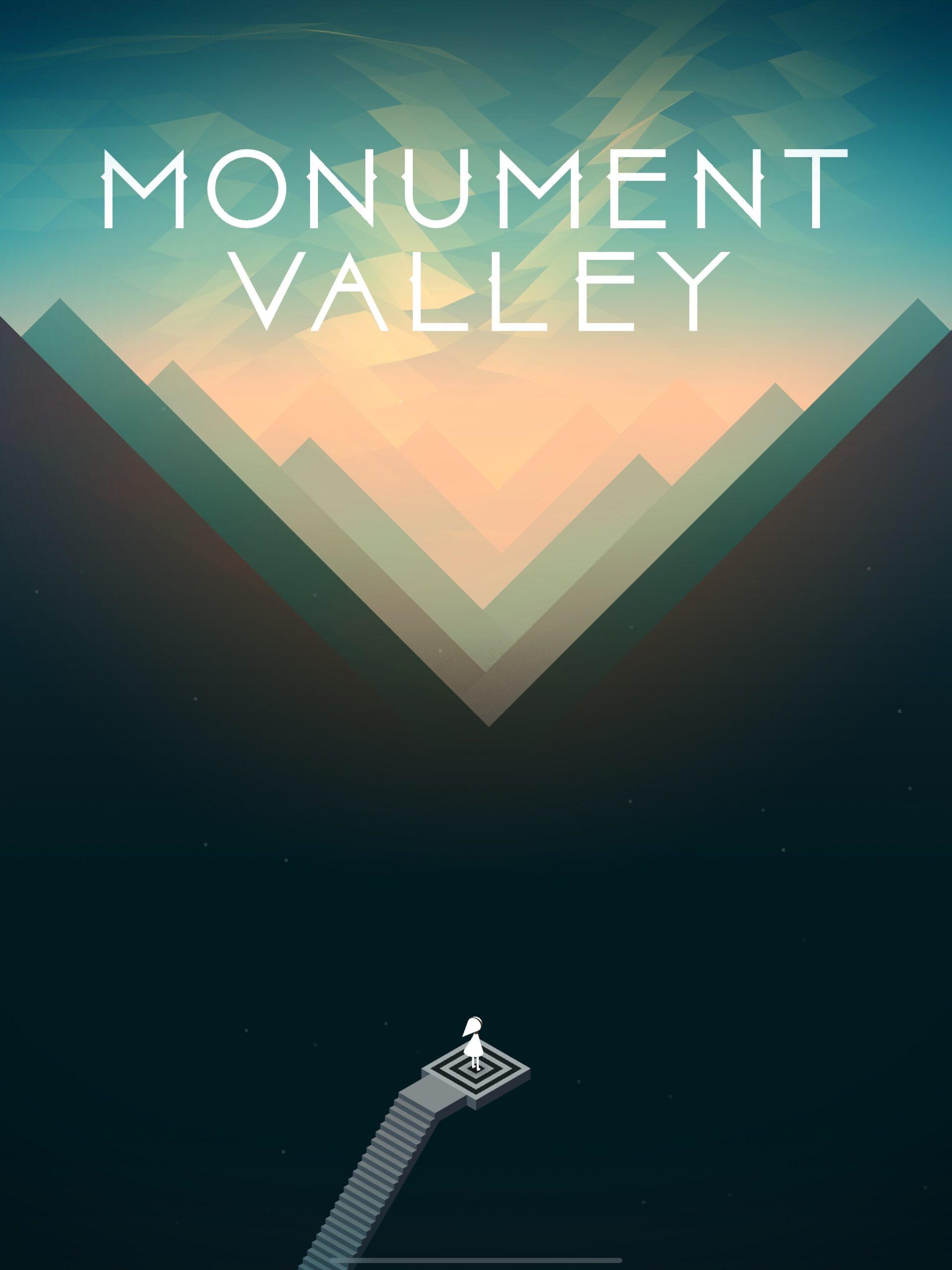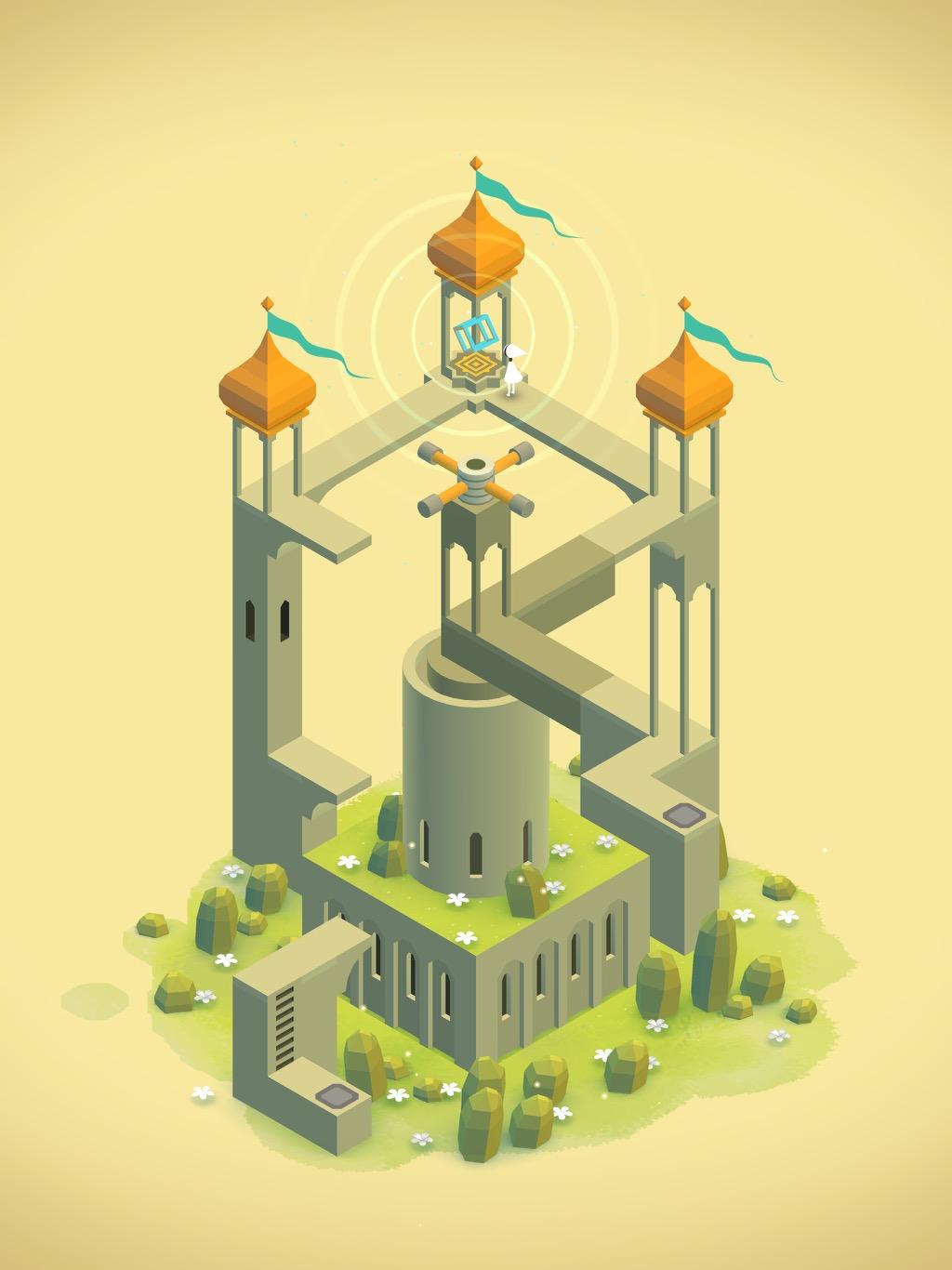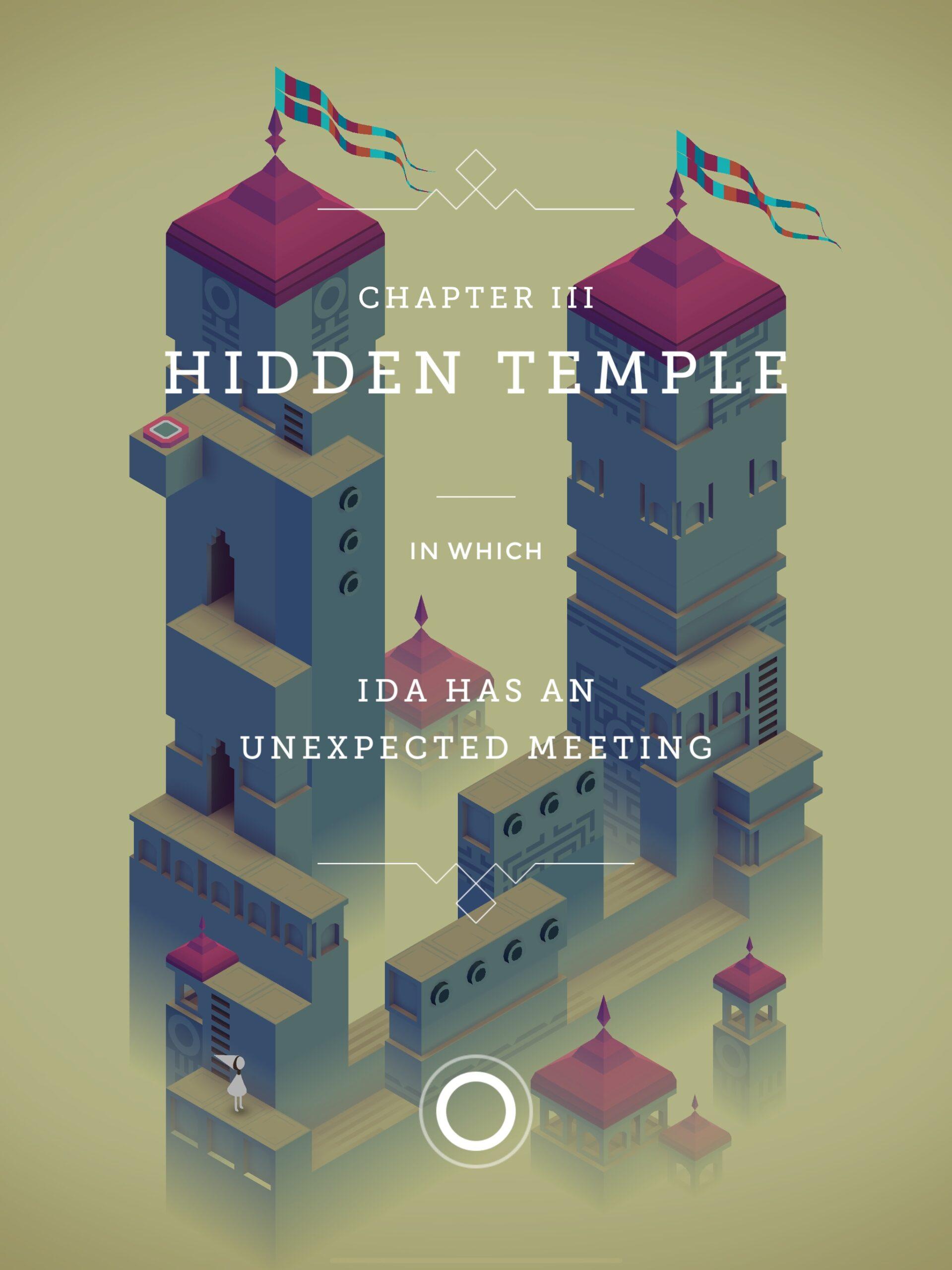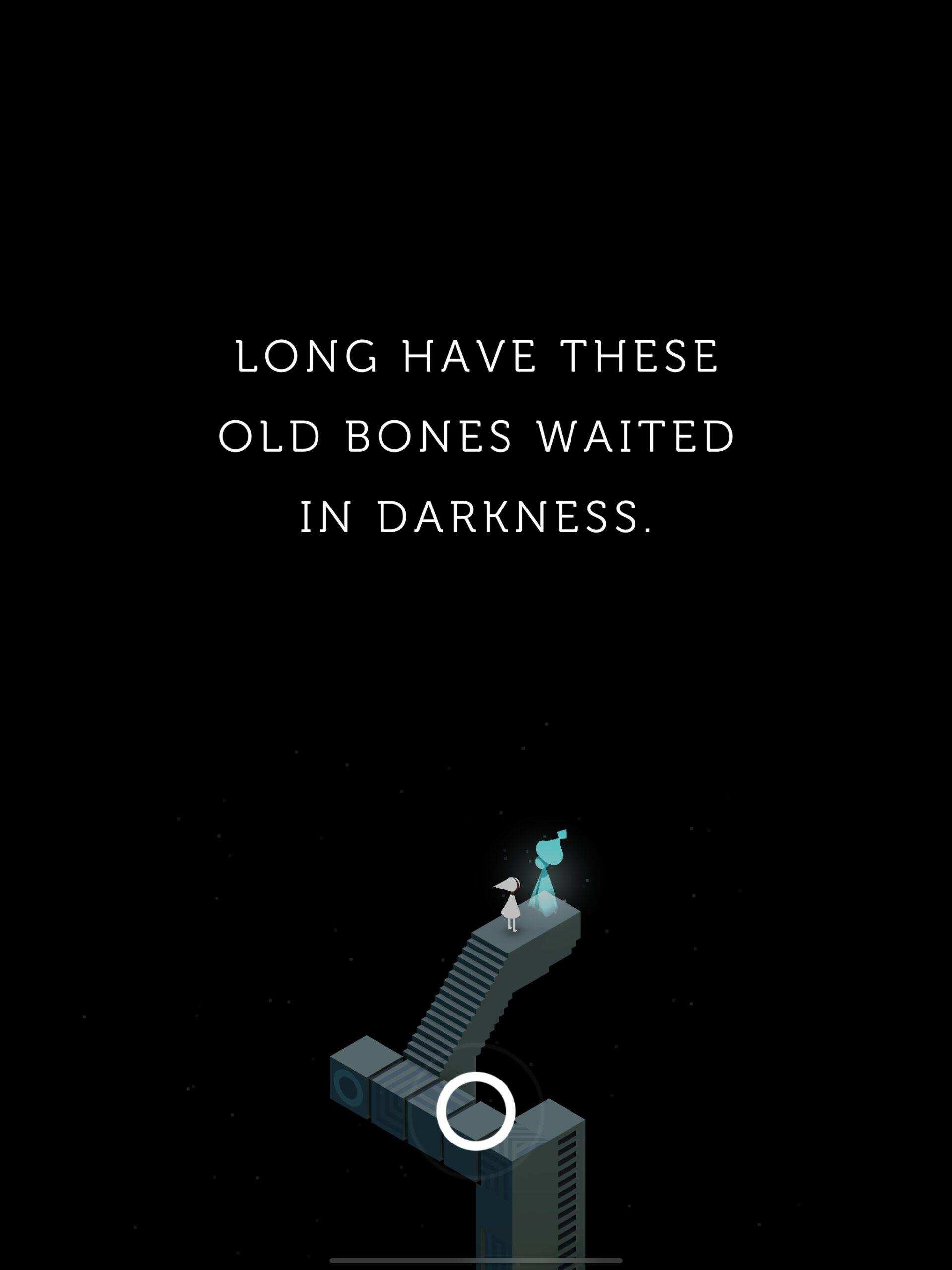Monument Valley is a puzzle game developed and published by Ustwo Games. It follows the journey of Princess Ida through surreal, architecturally inspired landscapes. Players manipulate these structures and optical illusions to solve puzzles and progress through levels. Monumental Valley is available on iOS, Android, and PC. The game appeals to a broad audience with its simplistic controls, and non-violent gameplay.

[ Title page for Monument Valley ]
In Monument Valley, the integration of puzzle mechanics with narrative elements allows players to actively engage with the game’s world through optical illusions, tactile interactions, and intuitive controls which contribute to an emotionally resonant and aesthetically captivating journey.

[ Chapter one, rotation ]
One of the key mechanics that Monument Valley uses to enhance its optical illusions and perspective-based puzzles is through the rotation and manipulation of the environment to reveal hidden pathways/connections that were not initially visible. Players tap and drag objects to alter the landscape by moving platforms, rotating sections of the architecture, and shifting over entire structures. This hands-on interaction makes the puzzles feel more strategic and forces the players to think through their interactions with the environment. This also creates a sense of discovery and satisfaction as players uncover new routes. The mini animations at the end of each puzzle also provide a rewarding visual payoff, emphasizing on the visual aesthetics of the world. These animations often reveal further story elements of transform the landscape in surprising ways, reinforcing the embedded narrative that lies within the game.
Perspective plays a crucial role in the game as well. The camera does not change positions, providing players with a fixed and isometric perspective throughout the game. This deliberate design choice allows players to move vertically and encourages players to focus on the spatial relationships within the level. Having a bird’s-eye view of the entire level also gives players the ability to survey the landscape and plan their route accordingly. This holistic view encourages players to consider the placement of obstacles and anticipate/prepare for next moves. Furthermore, the ability to see the entire level from the beginning fosters a sense of exploration as players can visually identify key landmarks and points of interests.

[ Chapter three title page ]
The puzzles in Monument Valley are designed to be more than just challenges; they contribute significantly to the game’s narrative. The games are broken up into chapters, each of which unfolds through small cut scenes, providing players with glimpses into Princess Ida’s journey. These enacting narratives serve to advance the overall storyline, offering context and motivation for the player’s actions. The narrative structure is further enhanced by the inclusion of chapter titles that provide insight into Princess Ida’s journey. At the beginning of each chapter, players get a title that offers a glimpse into Princess Ida’s current goals/state. These titles provide context and reinforces the connection between gameplay and the overarching storyline. Additionally, the narrative is embedded within the dialogue of NPCs and visually, each puzzle is designed to convey narrative elements and themes.

[ NPC interaction ]
Monument Valley also uses interaction loops and arcs to create a compelling and satisfying gameplay experience. The core interaction loop revolves around exploration. Players explore the environment and create new paths to solve each puzzle. The loop is repeated across different levels. Each level functions as an interaction arc, beginning with the introduction of new puzzle mechanic or environment, followed by increasing complexity and difficulty. These arcs provide a sense of progression and achievement of the game, with each completed level building upon the last. In my own playthough, I felt more accomplished as I progressed further and further into the game.
The introduction to new interactions and varied challenges prevent the gameplay from becoming too repetitive. Each level introduces a new way to interact with the world or teaches you how to chain interactions to succeed in the game. The game first introduces rotations in the first two chapters. Then the game introduces moving horizontal platforms that allow players to cross paths. From here, we are able to shift platforms vertically. As you progress into later chapters, you are required to complete a combination of these mechanics to solve the puzzle.


